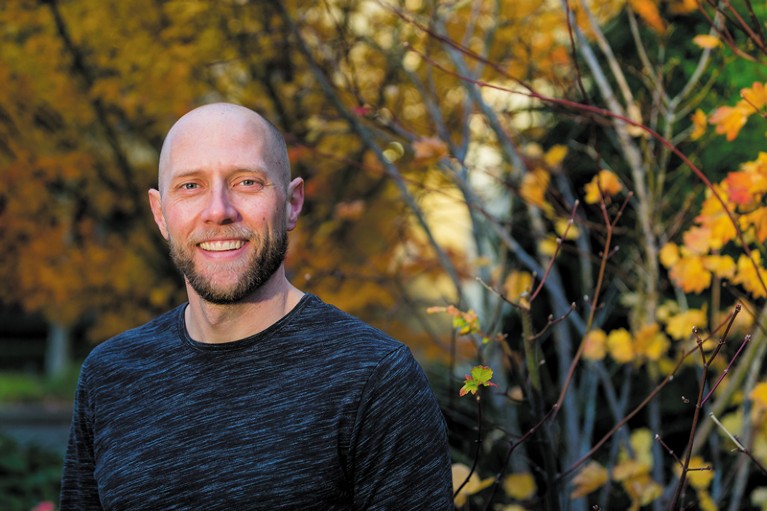
As a PhD student in 2006, Lucas Joppa launched his academic career in ecological theory. But after starting a postdoc at Microsoft in 2010, becoming chief environmental scientist in 2017 and chief environmental officer this July, he now develops tools that harness the power of big data to inform decision-making in the field.
What are your professional goals?
I want to find answers to big existential questions — such as how humans impact ecosystems and how that ultimately affects life on Earth. These questions have become increasingly computational as we amass both huge data sets from all over the world and the tools to analyse that volume of data. I wanted to work with the people inventing the best techniques to sift through all these data — methods that can help to solve the world’s most pressing challenges, from maximizing crop production to tracking endangered animals.
Describe Microsoft at the time of your arrival.
I moved to the company in Cambridge, UK, in 2010. People at the forefront of their fields — from machine learning to theoretical mathematics — all work on common problems together. Everybody has the intellectual curiosity to care a lot about everybody else’s work.
What did your advisers think of your postdoc?
Some thought it was risky. A member of my PhD committee, a leading ecologist at Duke University in Durham, North Carolina, took me to lunch and asked if I was certain that I wanted to do this. I’m sure it looked as if I had jumped overboard without a life jacket. But I thought it was the safest path.
Were you a computer geek growing up?
No. I grew up in north Wisconsin with no television. With my undergraduate degree in wildlife ecology, I thought that I’d be a game warden.
When did you realize that ecology needed more computational power?
Day one of my PhD. Everywhere I looked, there was no way around it. I was working on ecological networks — from predator–prey relationships to plants and pollinators. You can’t resort to pen and paper when you are researching extinctions in complex networks, or when you are using global satellite imagery to determine whether deforestation has encroached on 150,000 protected areas.
How did your role evolve into that of chief environmental scientist?
A couple of years ago, my mentors at Microsoft urged me to write down how the organization could leverage its investments in computational research to address issues related to the environment, conservation and sustainability. I wrote a memo, called AI for Earth, which detailed the prospects for using artificial intelligence (AI) to improve environmental sustainability. It was published as a Comment (L. N. Joppa Nature 552, 325–328; 2017) at around the time I took on a more-corporate role. To our knowledge, this position is a first for the technology industry.
Describe Microsoft’s AI for Earth programme.
When we announced the US$50-million, 5-year investment for tackling global environmental challenges in December 2017, most people were focused on the dollar amount. But I am struck by the five-year commitment — that’s a geological age for the tech sector. It gives me the stability to form partnerships, award grants and foster research to find ways to protect biodiversity and identify crucial areas for conservation.
Do you have advice for ecologists who want to use AI and computing power?
Don’t wait. Anyone can get started with programming languages such as R or Python. AI for Earth is about as easy as it can be for PhD students. And we offer small seed grants that require only a one-page form to allow scientists to access Microsoft’s best AI technology. Currently, we have 112 grant recipients in 27 countries.

 Big data jobs are out there
Big data jobs are out there
 Collaborative science
Collaborative science







